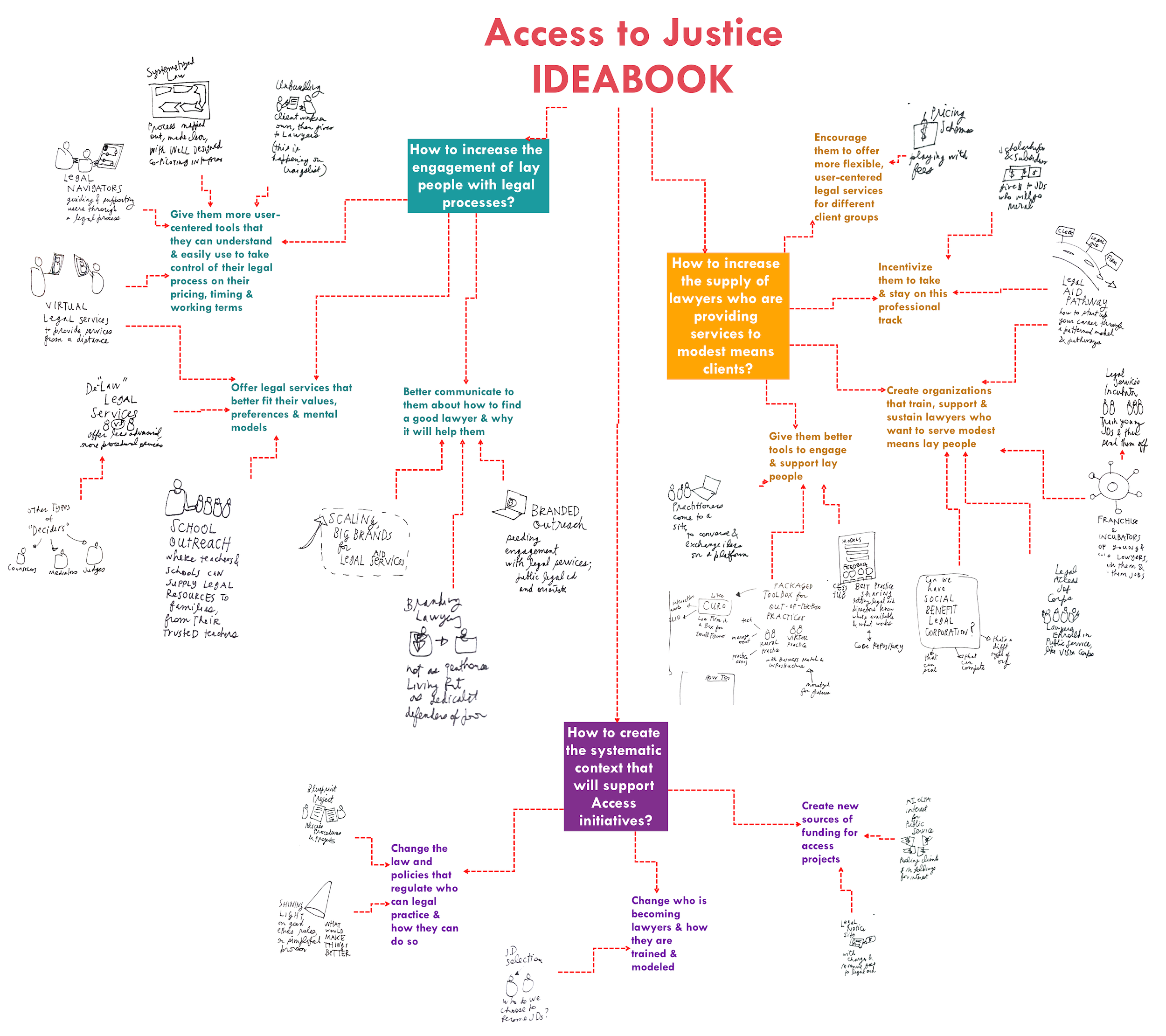Over the past year, I’ve attended meetings, conferences & conversations where the discussion has all been centered around:
What are the best ideas for how we can create greater Access to Justice in the U.S.?
My notebooks are full of small sketches of these ideas — so I’ve unpacked them and started to lay them out in a more systematic way. This is a first mindmap from my notes — laid out in a staged Prezi here, and in a larger full-image underneath.
Here is the whole mindmap as a single static image.
The images & handwriting are a little sketchy, but this is a first draft of a more systematic inventory of concepts that have potential to pursue. What I’ve noticed is that conversations tend to ping-pong around with lots of different ideas, and I’d like to see a more deliberate approach.
If we start to categorize different groupings of Access initiatives, then we can see more progressive action. An action plan, based on a systematic map of Access Initiative Ideas could look like the following:
- Expand this map out with more concepts for each of the categories, drawing on analogous industries & other generative discussions.
- Prioritize which initiatives are worth pursuing now, which could go on the backburner.
- Catalog what initiatives have already (or are currently being) pursued, what their outcomes have been, and what lessons, data, and requirements we can pull from these experiments and apply to future initiatives.
- Determine which stakeholders (law schools, law firms, the state bars, the ABA, the Legal Services Corporation, legal aid groups, pro bono departments, startups, and otherwise) could take the lead on certain initiatives & get them to be ‘project owners’ — rather than having the ideas floating around.
- Initiate projects that try out small-scale versions of these initiatives, collect data & feedback to iterate upon these first pilots, and then progressively scale up the pilots that have promise.
Ideally, this could become a coordinated, collaborative Access to Justice movement — where information & experiments are gathered together systematically & shared openly, and where the many stakeholders in this area are working in sync to try many different types of initiatives to solve the access crisis.

2 Comments
This is awesome, Margaret! Thank you for organizing (and visualizing) these Access to Justice ideas/initiatives. I want to suggest something that might be too broad for this project, but what the heck…. I think we as a society and communities need to address how we make legal-related decision and (more importantly) how we resolve conflicts that have been traditionally handled by lawyers, arbitrators and the courts. The ADR field has started this discussion, but I think it needs to include a broader perspective. We shouldn’t just be trying to find alternative processes for disputes defined by lawyers as “legal”. We should be finding ways to redefine the “problem”/”dispute” so that it can be dealt with in the best way, with or without a legal or semi-legal process. I’m trying to broaden my lawyer and mediator perspectives using design thinking (and building my “creative confidence”) in thinking about this.
Would this perspective be too broad and vague for this #A2J project?
Jim Levy
It’s ambitious — but it’s healthy not to only be thinking of ‘How do we redesign the interfaces to the current legal system’ and start thinking of ‘How do we redesign the legal system’s options & processes themselves?’ So far I’ve shied away from the 2nd question because of its larger scope, and concentrated on the more approachable first question. But ultimately I want to tackle the big question about what other alternative problem-solving systems could look like! ODR is one stream of this, and I can imagine lots of other more holistic services being offered too…